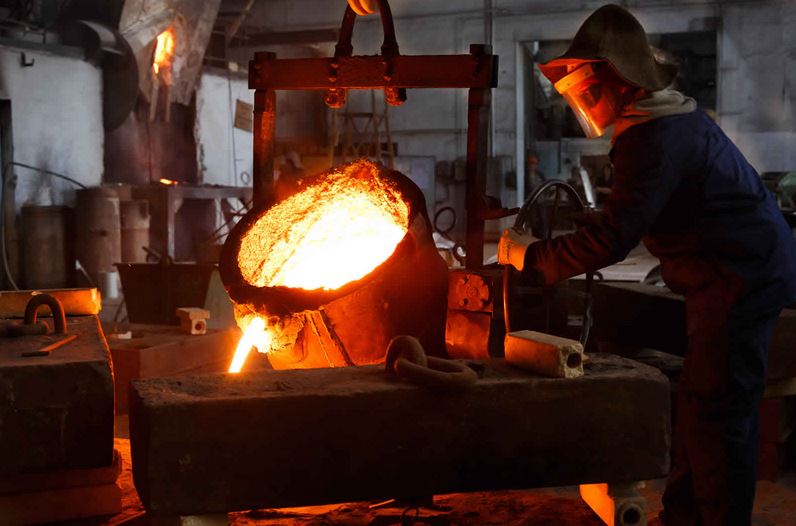Monarques Gold acquires Agnico Eagle’s Mckenzie Break and Swanson properties

The Corporation gains two more gold deposits in the vicinity of the Beacon and Camflo mills
 Monarques Gold Corp. (TSX.V:MQR) (OTCMKTS:MRQRF) (FRANKFURT:MR7) is pleased to announce that it has entered into an agreement with Agnico Eagle Mines Limited (NYSE:AEM, TSX:AEM) to acquire the McKenzie Break and Swanson properties (see our new property map covering close to 300 km2), which both host gold deposits near Monarques’ wholly-owned Beacon and Camflo mills. The terms of the agreement are described at the end of this press release.
Monarques Gold Corp. (TSX.V:MQR) (OTCMKTS:MRQRF) (FRANKFURT:MR7) is pleased to announce that it has entered into an agreement with Agnico Eagle Mines Limited (NYSE:AEM, TSX:AEM) to acquire the McKenzie Break and Swanson properties (see our new property map covering close to 300 km2), which both host gold deposits near Monarques’ wholly-owned Beacon and Camflo mills. The terms of the agreement are described at the end of this press release.
“This is an excellent transaction for Monarques, as it could significantly increase the resource available for processing at our Beacon mill,” said Jean-Marc Lacoste, President and Chief Executive Officer of Monarques. “The previous owners made significant investments on these properties, including building ramps to access the two deposits. Furthermore, both deposits have the benefit of lying close to surface. The next step for Monarques will be to confirm the historical estimate of the two deposits in line with NI 43-101 and explore the options for extracting those resources. We will also try to determine the potential for increasing the resources of the deposits, as most of the drilling done on the properties was at a shallow depth.”
McKenzie Break Property
The McKenzie Break property hosts a high-grade gold deposit that lies just 40 kilometres north of the Beacon mill and 25 kilometres north of Val-d’Or, Quebec. It consists of nine mineral claims covering a total area of ​​336.3 hectares, and is accessible year-round via Route 397 and a gravel road. The property is also about nine kilometres south of the rail link between Barraute and Senneterre. The property has surface and underground infrastructure, including a ramp providing access to the deposit, 80 metres below surface.
The McKenzie Break deposit has a historical estimate of 813,871 tonnes grading an average 6.63 g/t Au for a total of approximately 173,500 ounces of gold (source: Technical report on the McKenzie Break property, Claude P. Larouche, July 15, 2007). This historical estimate was realized by Placer Dome in 1991 and was calculated using the polygonal method and all the data collected from the green and orange zones and a cut-off grade of 1.70 g/t Au. Close to 60% of those ounces are located in the green zone, which grades an average of 8.49 g/t Au. In 1994, following the drilling of 67 additional holes in high-grade areas identified by Placer Dome’s mineral inventory, Western Quebec Mines performed a new resource estimate for two of the six lenses interpreted. Both lenses were drilled on a tight grid (30 x 30 metres) to optimize the resource estimate. This new calculation, based on the polygonal method and using a cut-off grade of 3,5 g/t Au, shows a historical estimate of 161,348 tonnes grading 10.86 g/t Au, or approximately 56,300 ounces of gold, classified as indicated, and 24,695 tonnes grading 5.23 g/t Au, or approximately 4,200 ounces of gold, classified as inferred (Mannard, 1994). These estimates are not supported by an official technical report. A Monarques qualified person has not performed sufficient work to classify these historical estimates as current mineral resources as defined by NI 43-101, and the Corporation therefore does not consider them as current mineral resources. Although the historical estimates may not be reliable, the Corporation nevertheless believes that they provide an indication of the property’s potential and are relevant for any future exploration program. In order for the historical estimates to become current resources, the Corporation must carry out new drilling on the property, and issue a new mineral resource estimate pursuant to NI 43-101.
A total of 37,750 metres of diamond drilling coming from 258 holes was carried out on the property. Drilling was concentrated on the green and orange zones. Most of the holes were shallow, with an average length of 150 metres per hole.The mineralization consists of multiple narrow veins, some of which are high-grade with a nugget effect.
In addition, metallurgical testing on samples involving gravity separation followed by direct cyanidation yielded a recovery rate of up to 99.5% (Source: Laboratoire LTM, July 2010).
Swanson Property
The Swanson property hosts a gold deposit located 65 kilometres from the Beacon mill and 12 kilometres northeast of Barraute, Quebec. It consists of one mineral lease and 129 claims covering a total area of ​​5,111 hectares, as well as a 500-metre ramp down to a depth of 80 metres. The property is accessible year-round via Route 367 and a gravel road. A railway track also crosses the property, as does a transmission line.
The Swanson deposit contains a historical estimate of 814,600 tonnes grading an average of 3.71 g/t Au, classified as inferred, for a total of approximately 91,200 ounces of gold. The historical estimate was realized by Lac Minerals in 1985. Previous operators concluded that there was potential to mine a smaller resource via an open pit. These estimates are not supported by a formal technical report. A Monarques qualified person has not performed sufficient work to classify these historical estimates as current mineral resources as defined by NI 43-101, and the Corporation therefore does not consider them as current mineral resources. Although the historical estimates may not be reliable, the Corporation nevertheless believes that they provide an indication of the property’s potential and are relevant for any future exploration program. In order for the historical estimates to become current resources, the Corporation must carry out new drilling on the property, and issue a new mineral resource estimate pursuant to NI 43-101.
Terms of the agreement
Monarques can acquire the McKenzie Break and Swanson properties by paying Agnico a total of CA $4,600,000, including CA $1,600,000 payable in cash and CA $3,000,000 payable in common shares of the Corporation over a four-year period. Payments are as follows:
- At signature of the agreement: CA $600,000 in common shares;
- On the first anniversary of the agreement: CA $400,000 in cash and CA $600,000 in common shares;
- On the second anniversary of the agreement: CA $400,000 in cash and CA $600,000 in common shares;
- On the third anniversary of the agreement: CA $400,000 in cash and CA $600,000 in common shares; and
- On the fourth anniversary of the agreement: CA $400,000 in cash and CA $600,000 in common shares.
In addition, Agnico is entitled to a 1.5% net smelter return royalty on each property. Monarques can reduce each of these royalties to 1.0% by paying Agnico CA $750,000.
Concurrent with this transaction, the Corporation bought back a 1.5% net smelter return royalty on the McKenzie Break property in exchange for US $50,000 in cash and 600,000 common shares of Monarques.
These transactions are subject to regulatory approval.
The technical and scientific content of this press release has been reviewed and approved by Kenneth Williamson, M.Sc., P.Geo, the Corporation’s qualified person under National Instrument 43‑101.
